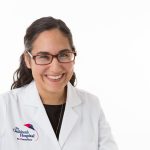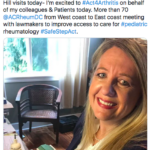Initiatives to Help
“To me, as a physician and a parent, the fact we have areas in this country with severe limitations in access to pediatric rheumatology is incredibly alarming,” says Blair Solow, MD, chair of the ACR Government Affairs Committee. To address this and attract more providers to the specialty, the ACR advocates for such initiatives as loan repayment programs, she says.
One such program, the Pediatric Subspeciality Loan Repayment Act, was authorized by Congress but hasn’t been funded yet. The ACR is advocating to get the necessary funding now, Dr. Solow says. “Without the funds, the program cannot start supporting providers,” she adds.
These programs are important for attracting providers to the specialty because pediatric rheumatologists often earn less money than generalist pediatricians, and they must complete a three-year fellowship compared with the two-year fellowship for adult rheumatologists.
Unfortunately, pediatric rheumatologists may not qualify for federal or state loan repayment programs because of the specialty nature of the job, according to Joseph Cantrell, ACR’s senior manager of state affairs. “And that’s the case for a lot of cognitive specialists. We have this image of doctors—particularly specialists—that they make a lot of money, when the truth is a lot of them make on par or close to what the primary physician does,” Mr. Cantrell says. “So they’ve been left out because of the idea of the Ferrari-driving specialty surgeon.”
State initiatives may also help expand the workforce on a more local level. In Georgia, Rep. Kim Schofield recently introduced HB 42 (for the second time) to create a program that includes all cognitive specialties. The program would provide $25,000 per year for up to four years for a provider’s commitment to work in an underserved area.
One issue with loan repayment programs is that physicians may stay for the duration of their agreement but then move away, Mr. Cantrell says. He notes the ACR has started discussing legislation for offering tax incentives that could encourage providers to stay in underserved areas for the long term.
“If states want to have providers come to their area, [give] them a reason,” Dr. Syverson says. “In the grand scheme of things, it’s a really insignificant amount of money for a state to pay off one student loan to have somebody live there for 10 years. And once they live there, and they have a family and they get a career, they’re going to be invested in the community and they’re probably going to stay.”


